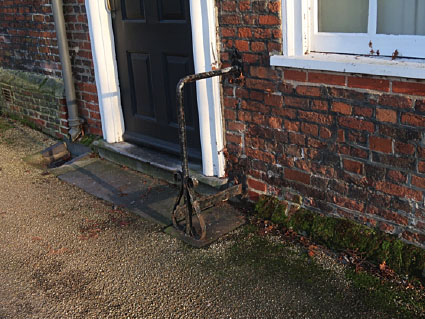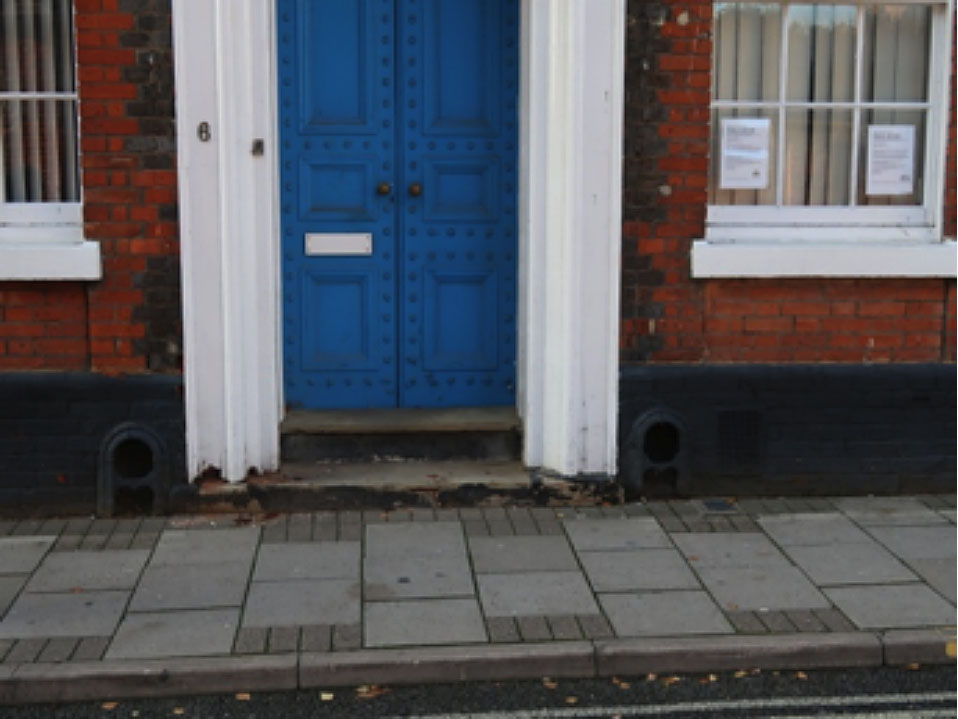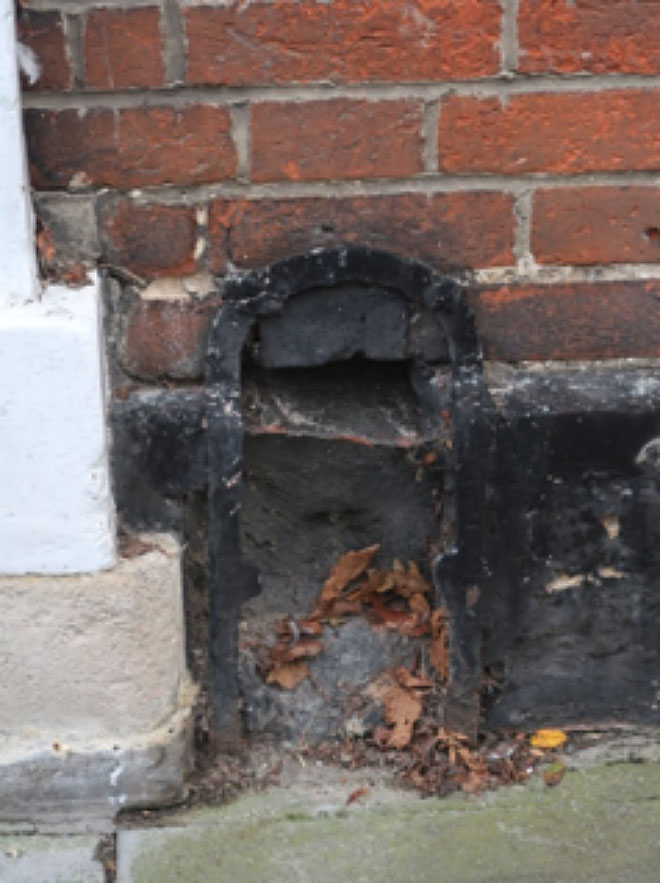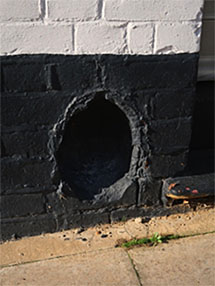- Screen Colours:
- Normal
- Black & Yellow
As time passes with ever dizzying swiftness things that are commonplace become anachronisms in what appears to be the blink of an eye. Then they are forgotten, neglected or destroyed and to all intents and purposes invisible. When did you last see a bike propped on its pedal on a curb? Where is all the tobacco advertising that once adorned the street scene? Chewing gum machine, anyone?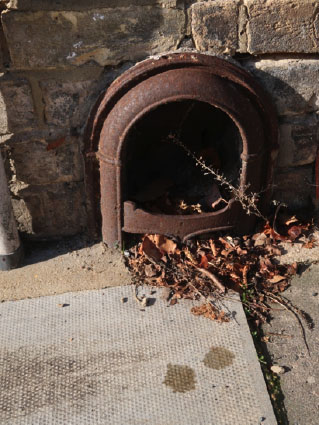
Those of us with an interest in heritage and the built environment are given to exhorting people to “look up”. Usually very wise advice as some of the best and relatively untouched things are above eye level. However I wish to suggest that the occasional downward glance can be rewarding too. Yes, residues of chewing gum, cans, plastic bottles, cigarette detritus and sunflower and pumpkin husks, make such scrutiny depressing. Nevertheless there are some forgotten relics of a more interesting kind lurking down there.
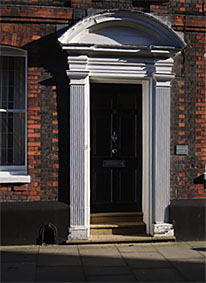 This brings me to the subject of boot scrapers. I presume that most readers of this journal know what I refer to. Younger members may know a version from the sort of gardening centres and stately house shops that aim to recreate Victorian gentility in modern suburbia. However they were once an essential item in most towns.
This brings me to the subject of boot scrapers. I presume that most readers of this journal know what I refer to. Younger members may know a version from the sort of gardening centres and stately house shops that aim to recreate Victorian gentility in modern suburbia. However they were once an essential item in most towns.
Some of our sister civic societies in Britain, France, Belgium and the United States have made systematic surveys of their scrapers. This article is far from that but I hope to rekindle awareness of these fascinating survivals, redolent as they are of past social conditions.
The advent of the scraper as we know it dates from the 18th century when improved town streets and pavements made walking something of a fashion for the middling and upper classes. Until then only the poor walked on what were little better than unmade footpaths.
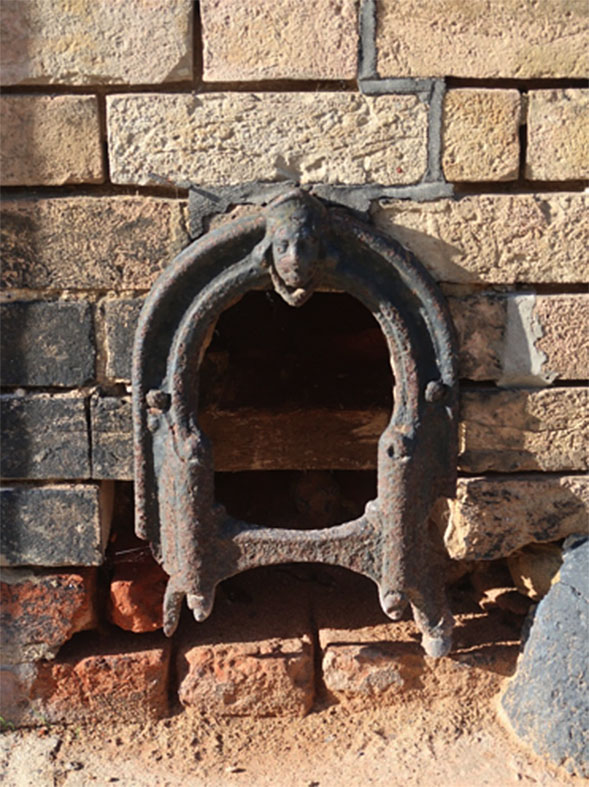 Although the surfaces and townscape might have improved the squalor left by horse traffic in particular and also limited development of effective drainage made walking hazardous and unpleasant.
Although the surfaces and townscape might have improved the squalor left by horse traffic in particular and also limited development of effective drainage made walking hazardous and unpleasant.
The French, so often in the vanguard of fashion, made them objects of beauty and named the scraper ‘decrottoir’. I leave Francophone readers to translate this term for themselves. More delicate persons may wish to be left in ignorance. In consequence there are many fine examples surviving in French and Belgian cities. A survey in Brussels has documented over 1000 different patterns.
In Britain the heyday of the scraper was mid to late 19th century. Many houses that could be entered directly from the street or pavement were provided with them. Where the house is set back or is rather grander than average there seem to fewer visible scrapers. More often they will be found at the rear where presumably the domestic servants would have needed to use them.
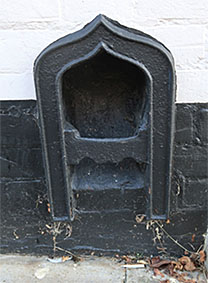 The commonest form is a horizontal blade set into a wall adjacent to the front door. It has a cast iron surround with a more or less ornate decoration. Sometimes there is a tray for catching the scrapings
The commonest form is a horizontal blade set into a wall adjacent to the front door. It has a cast iron surround with a more or less ornate decoration. Sometimes there is a tray for catching the scrapings
Other forms are based on an open blade with two supports. The most elegant also have a hand rest and sometimes a brush. This example (see above photograph) is at the ‘back door’ of Christchurch Mansion. Of note is that there isn’t one at the front.
As the state of the roads improved, particularly with better drainage and the reduction in horse traffic the scraper became largely redundant. Relatively rarely are 20th century buildings provided with them. Sometimes all that remains is a sad little empty grotto from where the scraper was removed. Quite often it is filled in or even rendered out of existence.
 I am wary of specifying most of their whereabouts as the reclamation trade sells vintage examples for quite high prices. Just keep your eyes lowered, and not on a phone screen, and these once essential little wonders will enrich your progress even on the least prepossessing of walks.
I am wary of specifying most of their whereabouts as the reclamation trade sells vintage examples for quite high prices. Just keep your eyes lowered, and not on a phone screen, and these once essential little wonders will enrich your progress even on the least prepossessing of walks.
Chris Wiltshire
Below left: Christchurch Mansion
